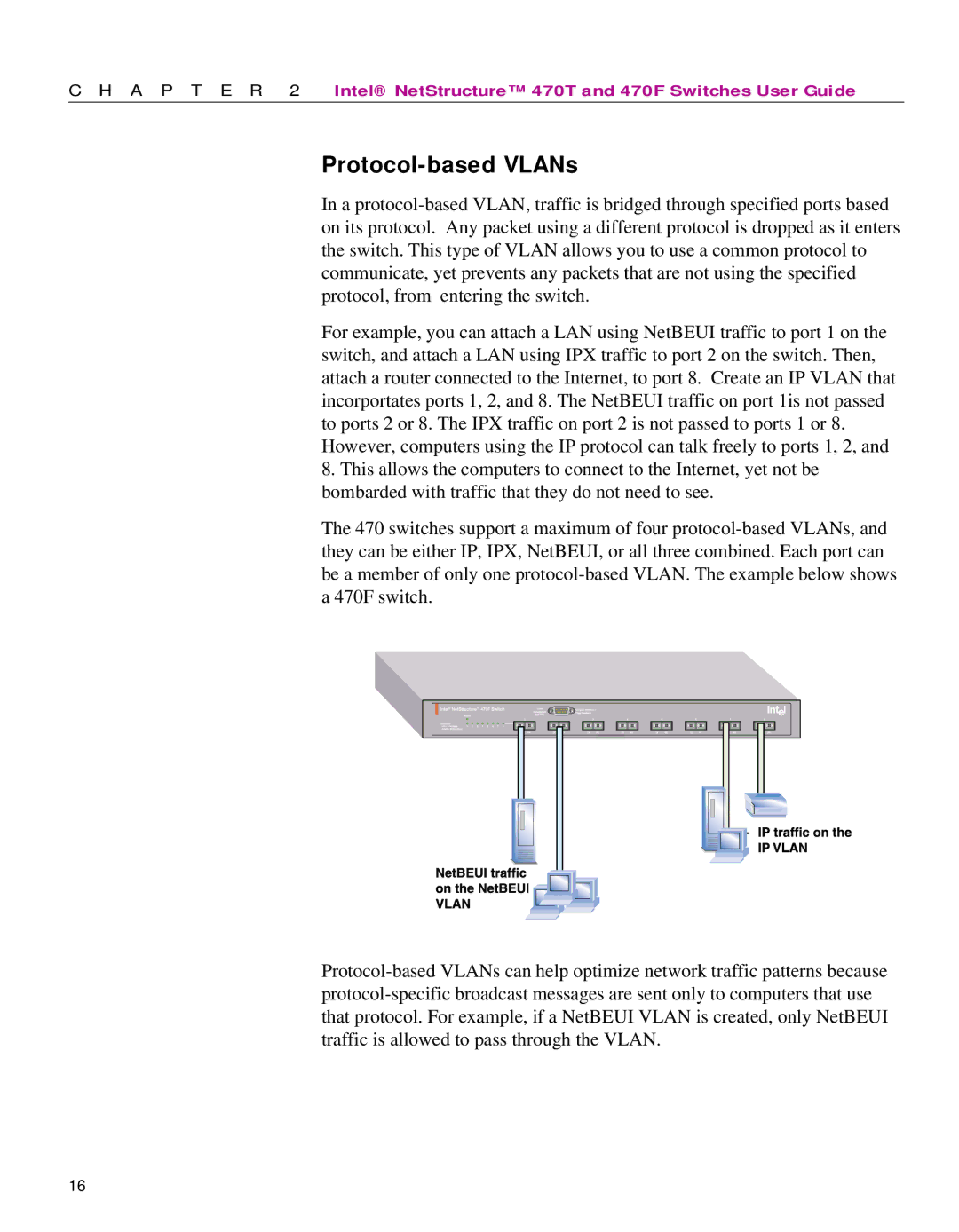
C H A P T E R 2 | Intel® NetStructure™ 470T and 470F Switches User Guide |
Protocol-based VLANs
In a
For example, you can attach a LAN using NetBEUI traffic to port 1 on the switch, and attach a LAN using IPX traffic to port 2 on the switch. Then, attach a router connected to the Internet, to port 8. Create an IP VLAN that incorportates ports 1, 2, and 8. The NetBEUI traffic on port 1is not passed to ports 2 or 8. The IPX traffic on port 2 is not passed to ports 1 or 8. However, computers using the IP protocol can talk freely to ports 1, 2, and
8.This allows the computers to connect to the Internet, yet not be bombarded with traffic that they do not need to see.
The 470 switches support a maximum of four
16
